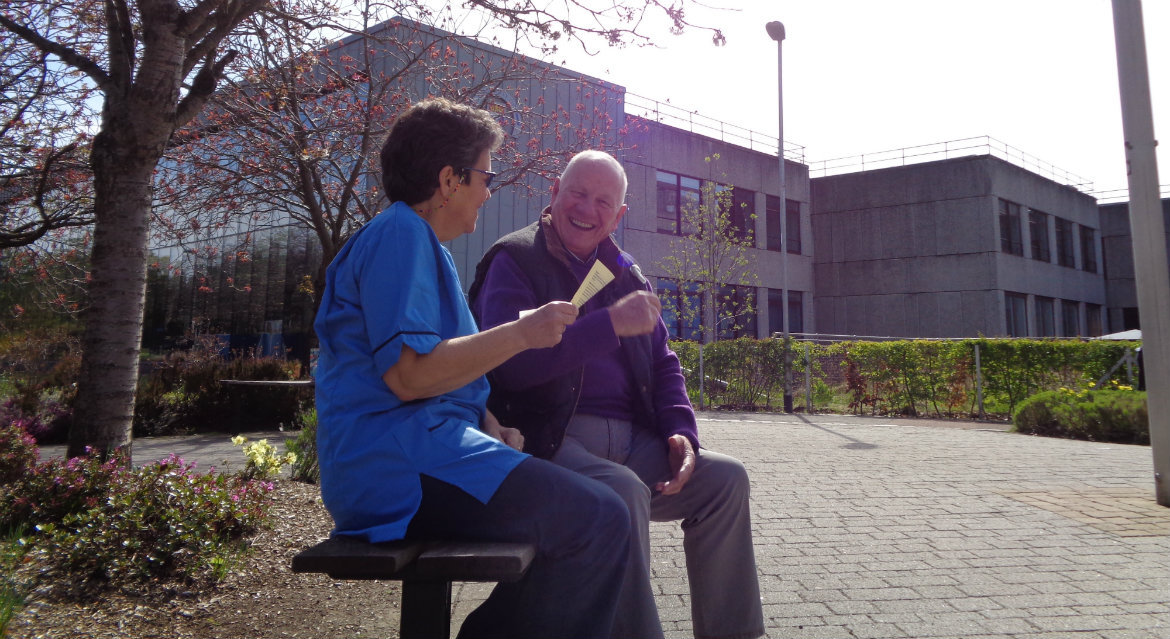Sunlight discovery could be key to pre-cancerous skin condition treatment
Published On Thu 8 Jun 2017 by Cara Longmuir

The Great British Weather is among the nation’s favourite subjects of debate, mainly concerned with the perceived lack of sunshine, something which is easy to understand during a wet start to June. But it turns out, according to a research study led by the University of Dundee, even the sunlight we do get is enough to act as an effective medical treatment.
Daylight Photodynamic Treatment is a technique which is increasingly being used in countries across Europe and in Australia. It uses visible light from the sun as the source of treatment. During treatment, patients wear sunscreen to protect themselves from harmful ultraviolet rays. A light sensitive cream, which is absorbed by diseased tissue, is applied and the skin is then exposed to daylight for at least two hours. This combination both protects the healthy skin, and treats the diseased skin.
Lead researcher, Dr Paul O’Mahoney, from the University of Dundee School of Medicine, said, “Daylight PDT is increasingly undertaken elsewhere, but its use has lagged behind in the UK.
“This is understandable, as there are concerns about the use of a treatment in the UK that relies heavily on the weather! Confidence in the use of effective light delivery is required.”
Now Dr O’Mahoney and colleagues have found that even in the most northerly parts of the UK, and far outwith the summer months, daylight PDT is a viable option.
Their work has arisen from a study focussed on Actinic keratoses (AK), pre-cancerous lesions which appear as dry, scaly patches of skin and are caused by damage from chronic sun exposure. In the UK it is often treated through Photodynamic Therapy (PDT), where light is shone onto the affected area of skin after a light-activated cream has been applied to kill the abnormal cells.
This takes place in a clinic but daylight PDT presents a less painful and more convenient treatment for patients.
This collaborative study, between the University of Dundee, NHS Tayside, Public Health England and Salisbury NHS Foundation Trust, has found that daylight PDT can be performed throughout the UK, from the most southerly to the most northerly locations. It can also be performed at times of the year in the UK not previously considered. The study looked at locations as far apart as Camborne in Cornwall to Lerwick in the Shetlands.
Researchers did find that while the sunlight may be strong enough to apply the treatment, patients might find it too cold to sit outside for the period required, so conservatory-based treatment may be a solution during the colder months.
Results contained in a research paper published by the ‘British Journal of Dermatology’ detail how the investigators studied thousands of daylight measurements throughout the country to work out where in the country would be suitable for treatment.
Dr O’Mahoney said, “We anticipate that this model will provide guidance for those involved in delivering dPDT clinical services and reassurance for both practitioners and patients as to when they can and cannot use dPDT in the UK.”
The British Association of Dermatologists is the central association of practising UK dermatologists. Our aim is to continually improve the treatment and understanding of skin disease. For further information about the charity, visit www.bad.org.uk
Wiley is the international scientific, technical, medical, and scholarly publishing business of John Wiley & Sons, with strengths in every major academic and professional field and partnerships with many of the world's leading societies. For more information, please visit www.wiley.com.
For media enquiries contact:
Cara Longmuir
Media Relations Officer
University of Dundee
Nethergate, Dundee, DD1 4HN
Tel: +44 (0)1382 385243
Email: c.z.longmuir@dundee.ac.uk